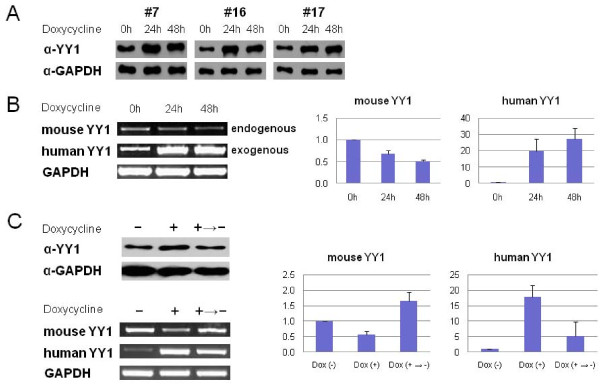Figure 3.
Homeostatic responses of the YY1 locus against the fluctuating levels of YY1 protein. A Tet-On induction system over-expressing human YY1 was established to control the cellular levels of YY1 protein in the Neuro2A cell line. Three stable YY1 inducible clones (#7, #16 and #17) were analyzed to determine the overall levels of YY1 protein at 0, 24 and 48 hours after the treatment of 1 ug/ml Dox with western blot analyses using YY1 and GAPDH antibodies (A). RT-PCR and quantitative RT-PCR were performed using total RNAs isolated from the same cell set as used in the above. The primer sets for RT-PCR were designed to distinguish between endogenous mouse and exogenous human YY1 (B). The transcriptional response from the endogenous mouse YY1 was further analyzed using a scheme which allows a cycle of up and down regulation of the human YY1 through Dox administration and withdrawal, respectively (C). Western blot analysis showed the concurrent up and down regulated levels of YY1 protein. Following RT-PCR and qRT-PCR also confirmed this pattern in the exogenous human YY1. As predicted, the endogenous mouse YY1 showed an opposite pattern: the down and up-regulation in response to the increased and decreased overall levels of YY1 protein.

